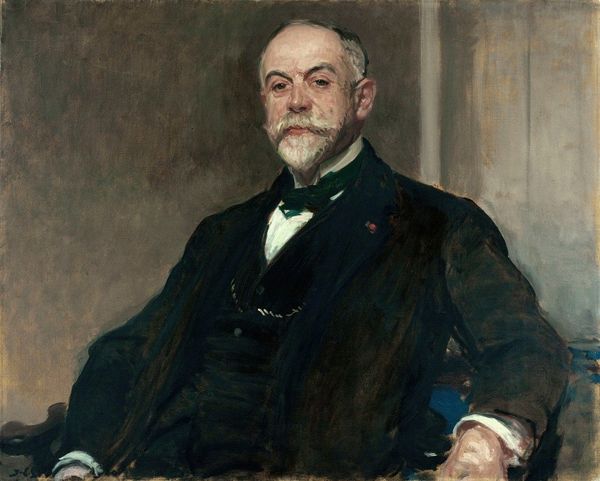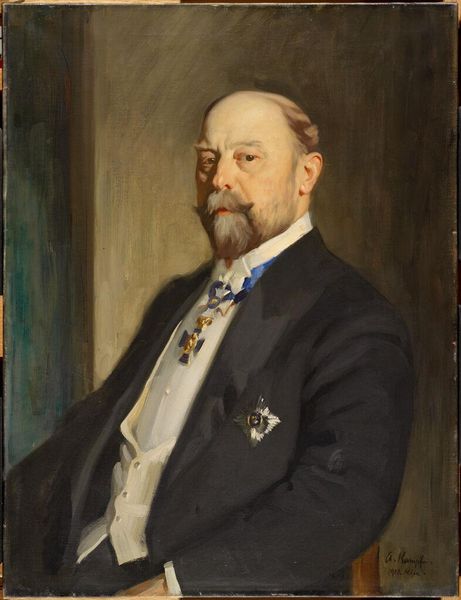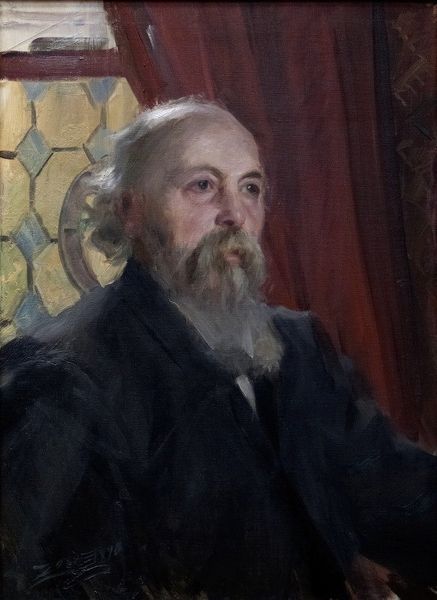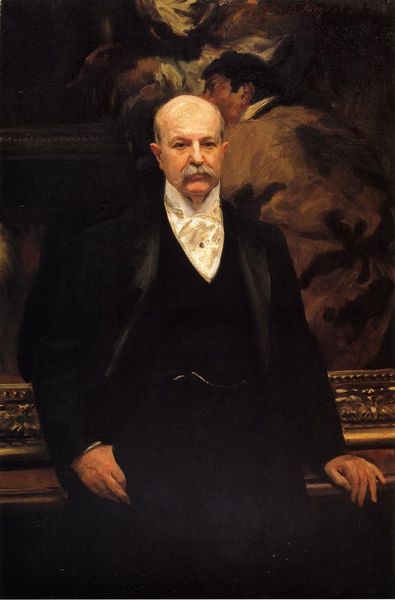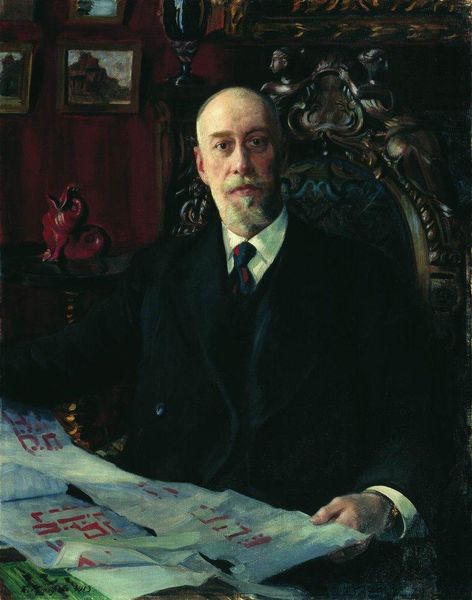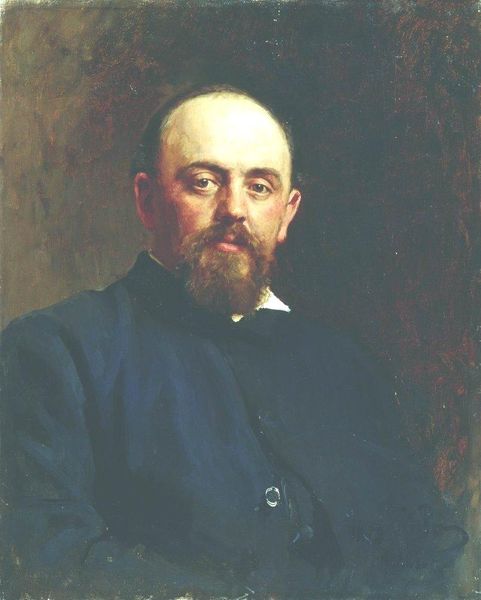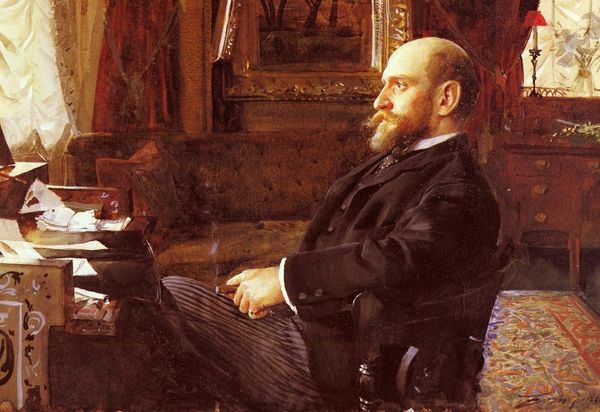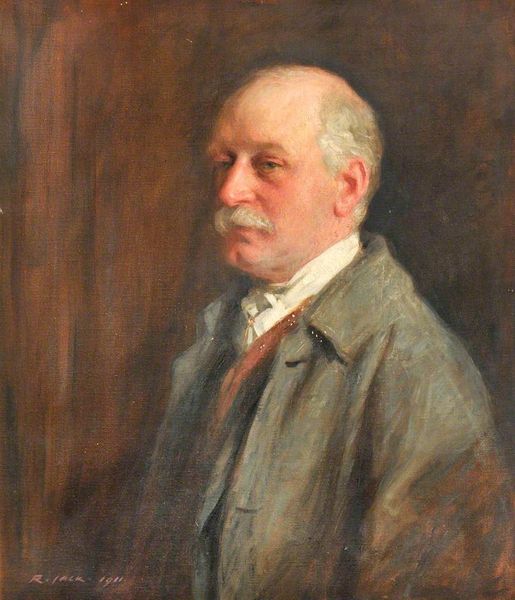
painting, oil-paint
#
portrait
#
character pose
#
character portrait
#
low key portrait
#
portrait image
#
portrait
#
painting
#
oil-paint
#
portrait subject
#
character photography
#
portrait reference
#
male-portraits
#
romanticism
#
academic-art
#
portrait character photography
#
realism
#
celebrity portrait
Dimensions: 94 x 125 cm
Copyright: Public domain
Curator: Ah, yes, this is Jean-François Portaels' "Self-Portrait," completed in 1842. Portaels offers us a glimpse into his own being during his earlier years through a muted palette. What's your first take on this portrait? Editor: It has an introspective quality, don't you think? His expression suggests someone lost in thought, perhaps wrestling with his ambitions. I imagine the muted tones were chosen intentionally to deepen that somber, thoughtful feeling. Curator: Indeed. Portaels' style often merged Romanticism with a Realist approach, capturing not just outward appearances but inner character as well. Note how he carefully uses symbolic gestures such as gloves and handkerchief, subtly signifying social standing. But let's not overlook the setting. How might the wall covering in the background contribute to this self-representation? Editor: Oh, the wallpaper—or perhaps a tapestry—is fascinating! At first, it fades into the background. Yet those soft pastoral scenes woven in may speak of nature's influence, perhaps pointing to a deep yearning for a world that lies beyond the bourgeois society of his sitter. Is there a tension between self-imposed societal duties and personal fulfillment? Curator: That’s an interesting question. The tapestry provides us with insight and symbolic representation regarding an ongoing tension that characterizes this era. Notice how the dark suit and the neutral palette project professional stability and the subtle yet powerful role clothing plays. He carefully crafts his image using societal expectations, as this kind of role-playing was extremely valued and an integral part of male public identity during the nineteenth century. Editor: And doesn't the dark palette emphasize his refined manners? The bow-tie, the lapel pin—it all feels so carefully constructed. It is so touching to observe his delicate gaze, even as an assertion of artistic self. He seems aware, even anxious, about how others will see him. Curator: A keen observation! Given the academic setting for which Portaels eventually became known, the image communicates an artist navigating self-representation with a subtle touch of anxiety. He both asserts and examines his identity, leaving us with layers to unpick. Editor: Yes, this painting almost feels like a conversation starter, a question posed by a younger Portaels. "Who do you see when you look at me?" Curator: Exactly! It remains a powerful visual statement about artistic selfhood and the ever-present act of becoming. Editor: A somber, compelling vision of identity. What a discovery.
Comments
No comments
Be the first to comment and join the conversation on the ultimate creative platform.
